Creedence Clearwater Revival is an American rock band from California. The band’s iconic status is largely due to the songs “Proud Mary” and “Bad Moon Rising.” Their music has been covered by a number of artists, including Bob Dylan, CCR’s own John Fogerty, and others.
Creedence Clearwater Revival is a rock band from the United States. They were formed in 1967 and disbanded in 1972. The band’s musical style has been classified as swamp rock, blues rock, and Southern rock.
Creedence Clearwater Revival brought rock back to its origins with a succinct fusion of rockabilly, swamp pop, R&B, and country at a time when rock music was moving away from the forces that had made it possible in the first place. Although the band’s tight, punchy arrangements were a team effort, singer, songwriter, guitarist, and leader John Fogerty was the driving force behind them. Fogerty’s iconic Creedence songs created lasting imagery of Americana while also reflecting pressing social problems of the day. The band’s brilliance was in their ability to do so with the economical, raw force of a classic rockabilly band.
Before their breakthrough to national popularity in the late 1960s, the core members of Creedence had been woodshedding in bar bands for nearly a decade. Tom, John’s elder brother, founded the Blue Velvets in El Cerrito, California, a small neighborhood over the bay from San Francisco, in the late 1950s. With a few embarrassingly obscure records under their belt, the band — which included Tom and John along with two high-school pals, drummer Doug Clifford and bassist Stu Cook — signed to Fantasy in the mid-’60s and released several singles as the Golliwogs, none of which charted. In reality, those early attempts held little promise; they were heavily influenced by the British Invasion and other R&B and rock trends of the day, with little indications of the swampy roots rock that would come to define CCR. John took strong control of the band’s direction, singing and composing almost all of their material, and the group only discovered themselves when he took solid control of the band’s direction.
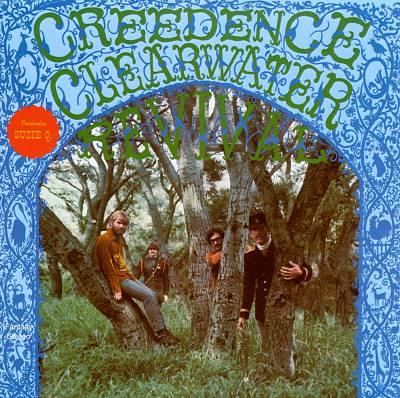 Creedence Clearwater Revival’s debut album, 1968’s Creedence Clearwater Revival, included extended, quasi-psychedelic workouts of the ’50s hits “I Put a Spell on You” and “Suzie-Q.” The latter song became their first major success, but it wasn’t until “Proud Mary,” a number two single in early 1969 that showed John’s innate ability to draw into Southern roots music and imagery, that the band really blossomed. “Bad Moon Rising,” “Green River,” “Down on the Corner,” “Travelin’ Band,” “Who’ll Stop the Rain,” “Up Around the Bend,” and “Lookin’ Out My Back Door” were among the gritty, Little Richard-inspired singer’s great successes during the following two years.
Creedence Clearwater Revival’s debut album, 1968’s Creedence Clearwater Revival, included extended, quasi-psychedelic workouts of the ’50s hits “I Put a Spell on You” and “Suzie-Q.” The latter song became their first major success, but it wasn’t until “Proud Mary,” a number two single in early 1969 that showed John’s innate ability to draw into Southern roots music and imagery, that the band really blossomed. “Bad Moon Rising,” “Green River,” “Down on the Corner,” “Travelin’ Band,” “Who’ll Stop the Rain,” “Up Around the Bend,” and “Lookin’ Out My Back Door” were among the gritty, Little Richard-inspired singer’s great successes during the following two years.
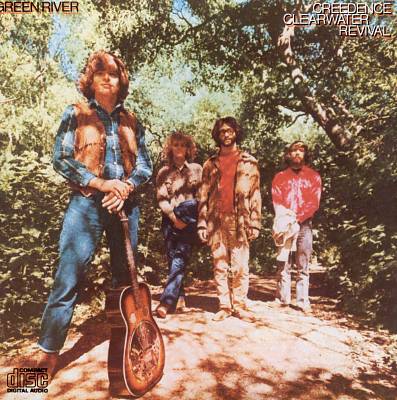 Green River, Willy and the Poor Boys, and Cosmo’s Factory are certainly among the greatest albums of the rock period, but Creedence’s real calling card was as a singles band. When the Beatles split up in early 1970, CCR was the only other band capable of creating big, super-catchy creative statements that flew to the top of the charts every three or four months. Despite the fact that they were from San Francisco, they seldom fell to the psychedelic craze of the time. In songs like “Fortunate Son,” John Fogerty demonstrated his ability to express the problems of the working class, as well as partying with as much funk as any white rock band could conjure on “Travelin’ Band” and “Down on the Corner.”
Green River, Willy and the Poor Boys, and Cosmo’s Factory are certainly among the greatest albums of the rock period, but Creedence’s real calling card was as a singles band. When the Beatles split up in early 1970, CCR was the only other band capable of creating big, super-catchy creative statements that flew to the top of the charts every three or four months. Despite the fact that they were from San Francisco, they seldom fell to the psychedelic craze of the time. In songs like “Fortunate Son,” John Fogerty demonstrated his ability to express the problems of the working class, as well as partying with as much funk as any white rock band could conjure on “Travelin’ Band” and “Down on the Corner.”
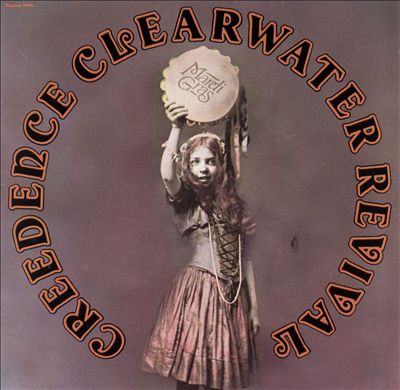 Creedence couldn’t be claimed to be a democratic entity with John Fogerty wielding such power, and Fogerty’s domination was to plant the seeds of the group’s rapid demise. The band was reduced to a trio when Tom Fogerty departed in 1971 (after releasing a few mediocre solo recordings of his own). On the trio’s last album, Mardi Gras (1972), John gave drummer Doug Clifford and bassist Stu Cook equal songwriting and singing time, a gamble that demonstrated the depth of John’s contributions to the group.
Creedence couldn’t be claimed to be a democratic entity with John Fogerty wielding such power, and Fogerty’s domination was to plant the seeds of the group’s rapid demise. The band was reduced to a trio when Tom Fogerty departed in 1971 (after releasing a few mediocre solo recordings of his own). On the trio’s last album, Mardi Gras (1972), John gave drummer Doug Clifford and bassist Stu Cook equal songwriting and singing time, a gamble that demonstrated the depth of John’s contributions to the group.
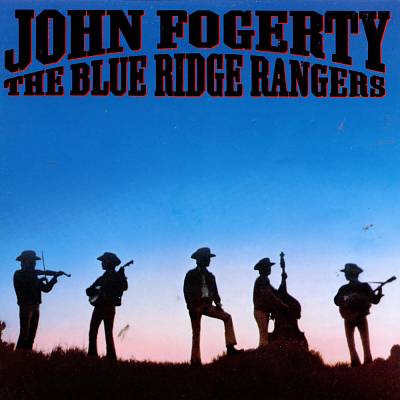 Shortly after the publication of Mardi Gras, Creedence Clearwater Revival disbanded. Following the release of The Blue Ridge Rangers, a compilation of self-recorded country and rockabilly covers, John Fogerty released an eponymous solo album on Asylum in 1975, followed by a decade of quiet. In 1985, he came back triumphant with Centerfield, but he was still embroiled in a legal fight with Fantasy Records and Saul Zaentz, who went so far as to sue the singer/songwriter for plagiarism. Fogerty won the lawsuit, and by the end of the 1980s, he was back on stage performing CCR songs. Long after Zaentz had left the business, he eventually returned to Fantasy.
Shortly after the publication of Mardi Gras, Creedence Clearwater Revival disbanded. Following the release of The Blue Ridge Rangers, a compilation of self-recorded country and rockabilly covers, John Fogerty released an eponymous solo album on Asylum in 1975, followed by a decade of quiet. In 1985, he came back triumphant with Centerfield, but he was still embroiled in a legal fight with Fantasy Records and Saul Zaentz, who went so far as to sue the singer/songwriter for plagiarism. Fogerty won the lawsuit, and by the end of the 1980s, he was back on stage performing CCR songs. Long after Zaentz had left the business, he eventually returned to Fantasy.
Tom Fogerty had a solo career in the 1970s, sometimes recording with Ruby, but he got sick in the 1980s after receiving an unscreened blood transfusion. He acquired HIV during the operation, which led to his death in 1990.
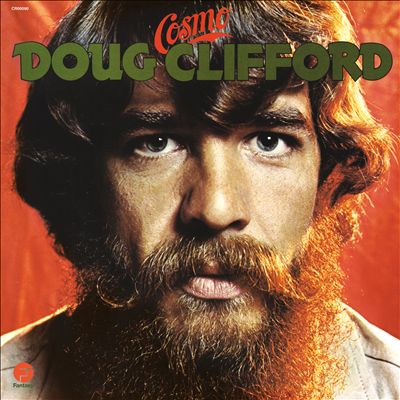 Doug Clifford released his first solo album, Cosmo, in 1972, although he also worked as a producer and drummed with a number of bands, frequently in collaboration with Stu Cook. They collaborated on Doug Sahm’s album Groover’s Paradise in 1974, but a decade later, they chose to perform as Creedence Clearwater Revisited in 1995. Clifford and Cook were sued by John Fogerty over the name, which forced them to play as Cosmo’s Factory for a time, but Clifford and Cook ultimately won the case.
Doug Clifford released his first solo album, Cosmo, in 1972, although he also worked as a producer and drummed with a number of bands, frequently in collaboration with Stu Cook. They collaborated on Doug Sahm’s album Groover’s Paradise in 1974, but a decade later, they chose to perform as Creedence Clearwater Revisited in 1995. Clifford and Cook were sued by John Fogerty over the name, which forced them to play as Cosmo’s Factory for a time, but Clifford and Cook ultimately won the case.
![Creedence Clearwater Revival [Box Set]](https://rovimusic.rovicorp.com/image.jpg?c=nAntnVfb5CyAf6TvMgEmX5hUoDg0hsvx4F4sL4oO-nA=&f=4) Fantasy continues to release CCR’s iconic studio recordings throughout the decades while the four members explored other musical endeavors. The Creedence Clearwater Revival: Box Set, published in 2001, delved into previously unheard material, including recordings by the Gollywogs. The Gollywogs finally got their own collection many years later. CCR’s Live at Woodstock set was published in time for the 50th anniversary of the event in 2019.
Fantasy continues to release CCR’s iconic studio recordings throughout the decades while the four members explored other musical endeavors. The Creedence Clearwater Revival: Box Set, published in 2001, delved into previously unheard material, including recordings by the Gollywogs. The Gollywogs finally got their own collection many years later. CCR’s Live at Woodstock set was published in time for the 50th anniversary of the event in 2019.
Creedence Clearwater Revival, or CCR, is an American rock band that was formed in San Francisco in late 1967. They had a string of hits in the late 1960s and early 1970s with songs such as Proud Mary, Bad Moon Rising, and Born on the Bayou. Reference: creedence clearwater revival have you ever seen the rain.
Frequently Asked Questions
What broke up CCR?
CCR was a band that broke up in the 1970s.
How many CCR songs are there?
There are a total of 78 CCR songs.
Are any CCR members still alive?
Related Tags
- creedence clearwater revival songs
- creedence clearwater revival born on the bayou
- creedence clearwater revival – proud mary
- creedence clearwater revival lead singer
- when was creedence clearwater revival formed
